2020 Activity Report
March News from the Yangon Japanese Classroom
31 March 2021
Global Japan Office Coordinator
IMAI Michiko
At LEVEL 4, after completing Lesson 19 of the elementary level textbook, students will be asked to make a speech about their future dream using the acquired sentence pattern "I want to be ~ in the future.". I thought I would stop this year, thinking that it would be extremely cruel to let them to talk about their future dreams because they live in the fear with the many victims of violence and massacres by the army every day. However I thought that it might be necessary to talk about their hopes in this difficult situation, so I decided to let them do it.
At first, there were 12 students in the class, but when the military blocked the Internet access using SIM cards, only students with WiFi at home were able to attend the class. Only 5 students were able to attend the class on that day.
Their dreams were "Be an interpreter fluent in at least three languages" "running a comic book cafe" "I want to be a TV presenter." "I want to become rich and help the poor and take good care of my family." and "I want to study history and become a tourist guide."
After we parted saying “Be safe” and “See you next week” and waving each other at end of the class, I bitterly cried in front of the computer because I felt pity for them and I couldn't stand the situation where I had to give my students this kind of greeting. But on this day, the students' faces were less depressed than usual. After all, I thought it was important to talk about hope and hold it in their heart.
May this horrible carnage end as soon as possible and peace return to Myanmar and their dreams come true.
May they live with hope. God, God, can you hear me?
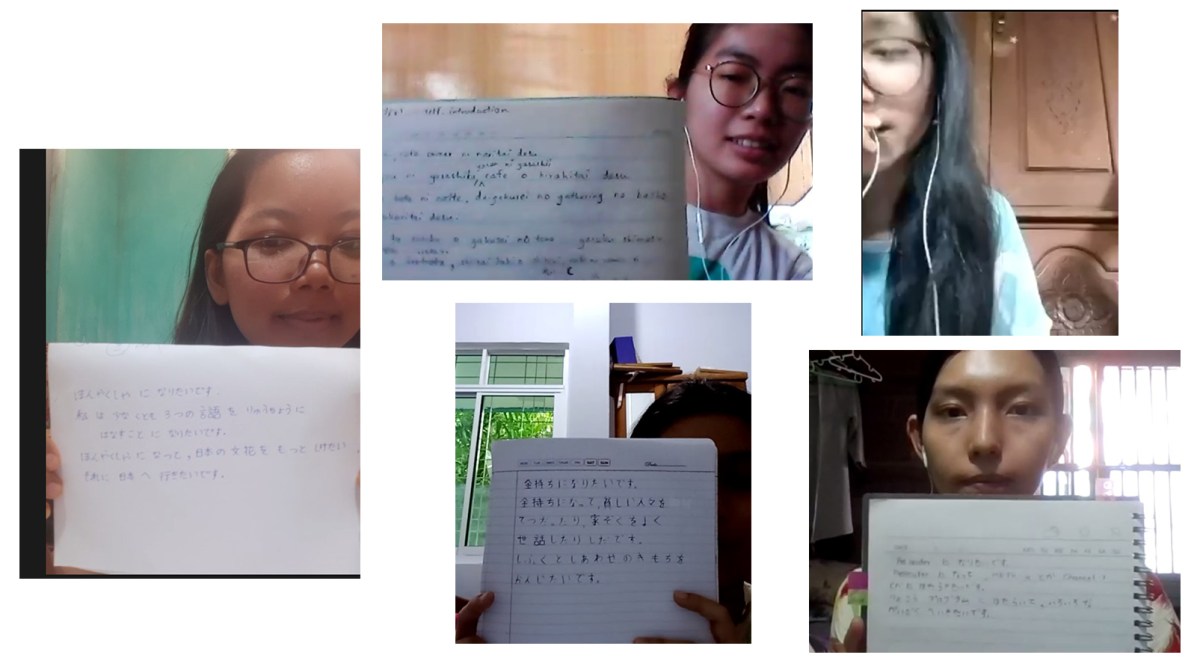
February News from the Yangon Japanese Classroom
28 February 2021
Global Japan Office Coordinator
IMAI Michiko
Starting from February 8, we included tandem learning, which was originally held in August as part of our 4-day winter intensive course, and GJO students participated. On February 2, I posted to GJO’s Facebook page that we were looking for participants, and there were about 25 students who gave me a “like!”, so I thought it would attract quite a few people, but only 12 students actually registered. I thought it couldn’t be helped given the circumstances, but once it started, only four people actually came. Some students wanted to participate in the demonstration, so they couldn’t participate in tandem learning. As a result, 8 Japanese students from TUFS and 4 students from Yangon University were divided into 3 groups to make presentations on “My Town” in their respective languages. Tandem learning started on the 8th, and participants were divided into groups on the 9th and 10th. They made presentations about their town in the group, asked for advice and made presentations in front of everyone on the 12th.
I went to see the group’s breakout room every day, and three Myanmar exchange students who are enrolled in the master’s course of our university joined each group as advisors and gave participants very careful advice. The students also put their heads together, arguing which expression was better or not, and on the last day they made a pretty good presentation. I think it was a fruitful study meeting suitable for the culmination of the exchange meeting that has been held since summer. I would like to thank all the teachers and personnel involved for taking time out of their busy schedule to participate in the event. Thank you.
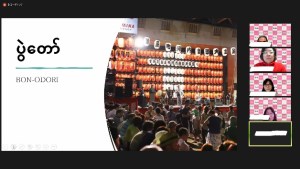

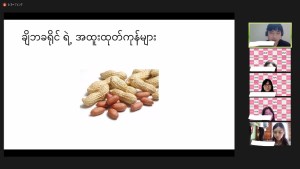
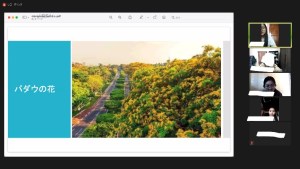
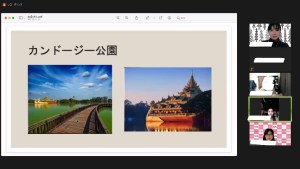
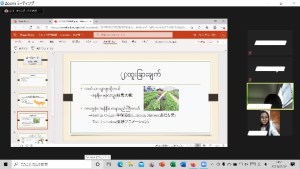
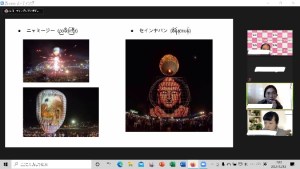
January News from the Yangon Japanese Classroom
31 January 2021
Global Japan Office Coordinator
IMAI Michiko
A new year has begun after the new coronavirus shook the world in 2020. I look forward to seeing “Kakizome (beginning of writing )” in the first class every year, but I’m afraid that’s not going to be possible this year. So, at the end of last year, I explained to the 13 students in my upper class about how “the plan for the year is made on New Year’s Day” and told them to think about their goals for the new year− about three for each student, and asked them to give a presentation during the first class. The results were as follows.
First of all, we had goals. There were 3 “Pass N4 (This is a grade of the Japanese Language Proficiency Test.) “, 3 “study Japanese for 45 minutes every day” and one “study for 30 minutes”. Why 45 minutes though? Other foreign languages were “study Thai 20 minutes every day” “Start to speak Korean” and “study English for an hour every day”.
And then, we had . “go to bed early” “get up at 7:30.” and “go to bed before 11 o’clock.”. It seems many students stay up late because they are young. We also had “exercise 15 minutes a day” “plank for a minute every morning”. Planks became popular on the Internet a couple of years ago. Because of the covid-19 pandemic, gained weight due to lack of exercise, and on top of that, the muscles of my arms have deteriorated, so I can’t support my heavy body, and I can’t do it for a minute, but students are still young! I can’t believe they decided to do such a hard thing every morning. As for food, some wanted to “add vegetables and fruits to one’s daily diet”, yes, of course. I think people in Myanmar like meat and tend to lack vegetables. We also had “drink 2 liters of water every day”. There were two people who wanted to “cook”.
Next we had. First, there was the goal of reading. There was one for “read all the books of one’s favorite novelist” and one for “read three books a month.”. There were two “read one book a week”. In music we had “play the guitar 15 minutes a day” and “listen to music during lunch break”. We also had “learn painting”. Lastly we had, not a hobby but a skill– “learn how to drive a car”.
Next was. There were two “recite a sutra for 10 minutes every night”.
Others were “save money” and “help one’s mother”.
It is not a language plan, but we also had “Studying Burmese studies hard”. The japanese version had a cute Japanese grammar error, but I felt great enthusiasm for studying Myanmar studies so I introduced it without any special frame.
Finally, I’d like to finish by introducing my yearly plans. I know you don’t want to hear about an elder’s yearly plans, but please do listen. First, I want to study Burmese for 30 minutes every morning. Second, I want to lose 5 kilograms. Third, I want to read 30 books. Actually, I haven’t done number 1 at all since the beginning of the year, so maybe I shouldn’t have put it into the annual calculation. No, I’m asking myself if I included it because it is difficult to do it. For number two, I actually have to lose 10 kilograms, but I’m sure I won’t be able to achieve it, so I’ll keep it at 5 kilograms. The only thing I will be able to achieve is to read number three– read 30 books.
December News from the Yangon Japanese Classroom
31 December 2020
Global Japan Office Coordinator
IMAI Michiko
Normally in December, we would have managed to get through the large classes of the new semester with the help of the graduate students in the teaching practice, but this year, since the university itself was closed, there was no opening of a new class, and we had almost the same students as before at ZOOM.
So, looking at the procession of people buying the Nenmatsu Jumbo Lottery– a year-end tradition in Japan, I thought it would be a good idea to introduce Myanmar’s lottery.
In Myanmar, lottery tickets are sold once a month. They are displayed at big shops like the one in picture, at small counters in the market, or on the back of a three-wheel truck. From February 2019, the 1st prize money became 1.5 billion chats (= About 115.5 million yen), and the customers who buy it are pretty serious. Most packages contain several 500 kyat (= About 38 yen) lottery tickets, and customers choose their favorite number to buy. When you take a look at the customers, you realize they are mostly middle-aged men. I guess women don’t buy it because they are realistic and don’t dream of getting rich at a stroke.
At the beginning of the next month, people buy newspapers or flyers to check the winning number. What is interesting is that when one buys a lottery ticket at a store, they leave their cell phone number and name in a notebook together with their lottery number. If you win, the shop will call you and let you know. In the event of a jackpot 1st prize, the store may put up a large and conspicuous promotional poster, saying, “In our shop, ○ ○ × × won 1st prize.”. In this case, both the face photo and the name of the winner are exposed to the public at a huge scale. If you don’t want to show your face or name, you can refuse. However, doing this is good advertisement for the store, so the store may give the winner a car or money.
Even so, I thought it was scary for one’s face and name to be exposed if you got the big prize, and I didn’t like it, so I asked my Myanmar friends about their opinion. According to a friend, the winners do not allow the names and faces to be displayed because they want to show off. There are times when they want to receive advertising fees from the store, but most often than not they want to share the joy of winning with their friends and acquaintances. They have nothing to hide. They are not afraid for people to find out that they have a lot of money as they donate to the pagoda and give it to poor relatives and friends, so they feel it’s okay to be known. This is only the way my friend thinks, and I don’t know what the majority of Burmese think.
Hmm. But money can break relationships, so if I won the big prize will definitely keep it a secret. Unfortunately, at the 2020 Nenmatsu Jumbo Lottery I only won 300 yen.
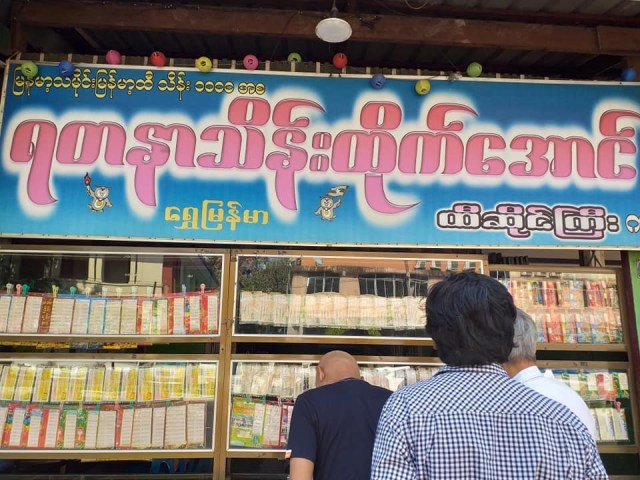
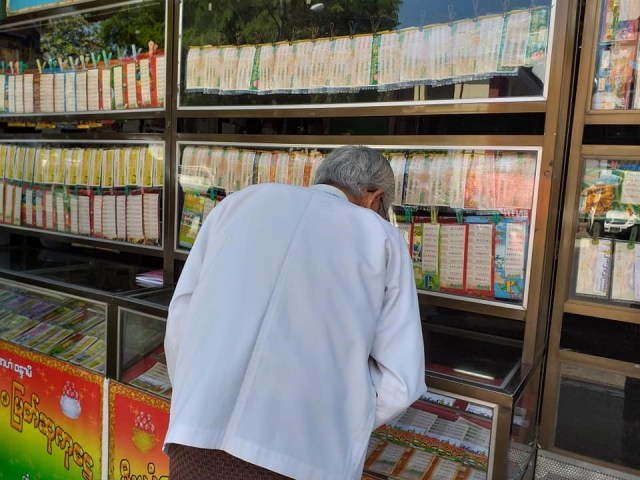
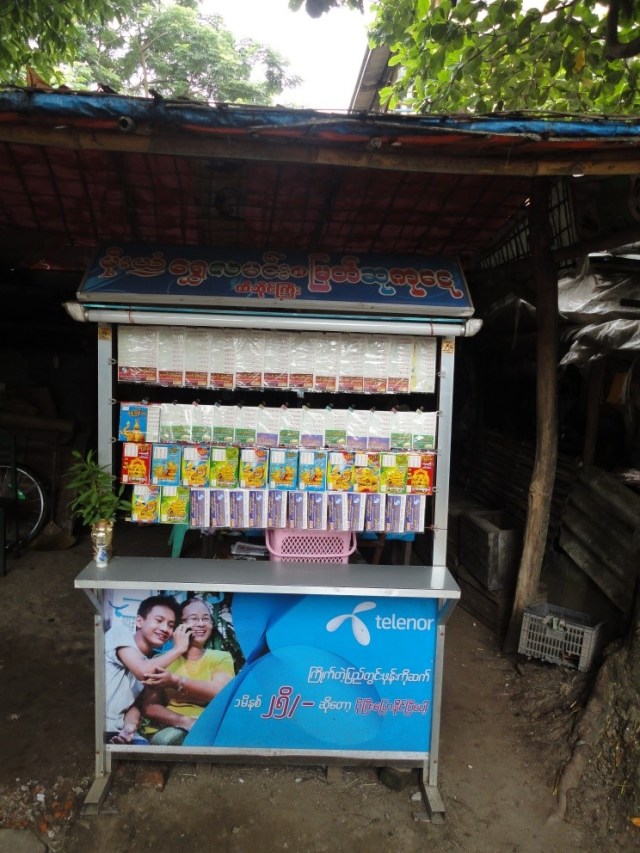
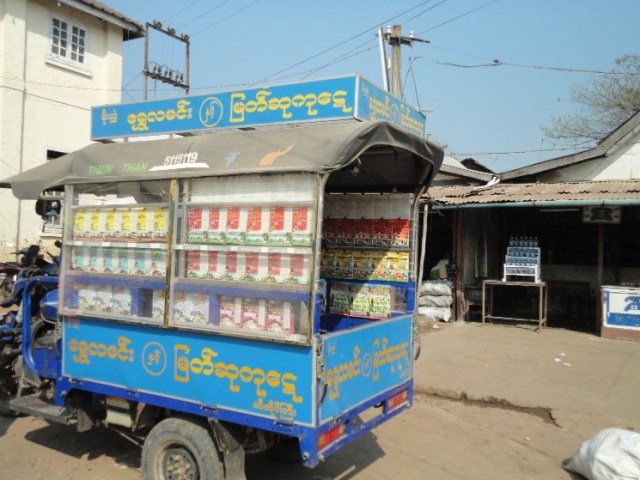
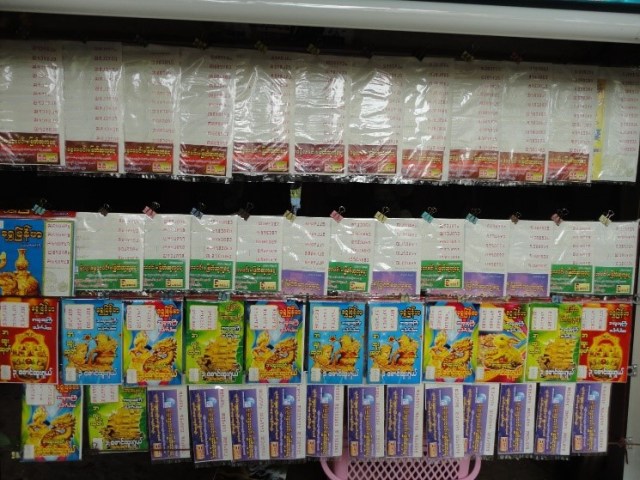
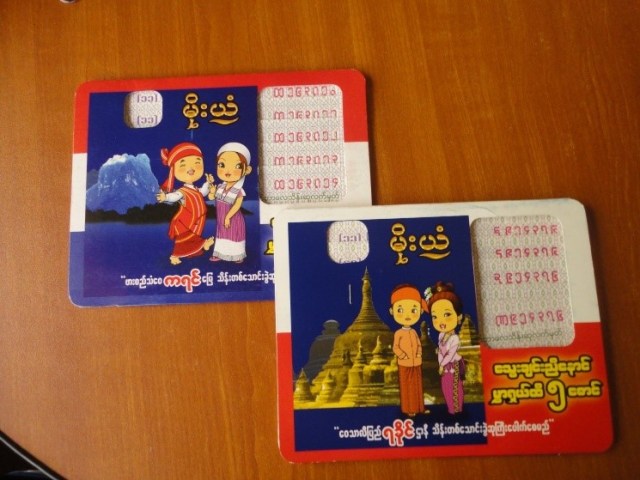
November News from the Yangon Japanese Classroom
30 November 2020
Global Japan Office Coordinator
IMAI Michiko
As I mentioned in my report in August, I would like to talk more about Mohinga again this month.
Mohinga is a national dish that consists of thin noodles made from rice instead of wheat. You use catfish stock for the soup, and put in some chickpeas tempura, boiled eggs, stems of bananas as you like, and eat it with coriander, mint leaves, lime, or red pepper.
To be honest, when I first ordered a Mohinga four years ago, I wasn’t a big fan. However, the more I ate it, the more I became addicted to it. Of course I would get tired of it if I ate it every day, but now I cannot go without eating it several times a week. I’m addicted to mohinga.
I tried the dish at various restaurants, and the taste was quite different at each one, which is also interesting. There are many places that serve coriander and mint as shown in the picture. My favorite school cafeteria Mohinga has a mint plate next to the Mohinga plate. I always ask for boiled eggs and fried beans. The ingredient you can see on top is coriander. I like the cafeteria Mohinga because it is generously served with lots of mint and real lime instead of bottled juice. After cutting the boiled egg with a spoon, I pile up the mint leaves on top of the noodles, and squeeze the fresh lime on top. The freshness of the mint and lime harmonizes perfectly with the rich broth of the Mohinga. I personally think putting mint instead of coriander is refreshing and more delicious.
I was satisfied with the university’s Mohinga, but one day a friend of mine brought me a Mohinga made by her sister. I was so surprised when I tasted it. Unlike the Mohinga in the restaurants in town, the soup was clear and the fish broth had such an elegant taste to it. I felt like I was eating a completely different dish. My friend explained that the difference was the choice of fresh fish. Is this what a home cooked Mohinga tastes like?
When I once said to a student, “Among Myanmar dishes, I like Mohinga the most” she replied, “Oh, really? Yangon Mohinga is not very tasty.” I asked where I could eat a better Mohinga, but I forgot, so this time I asked my LEVEL 4 students. Students say Mohinga in Myaungmya, a town in Irrawaddy Division in southwestern Myanmar, is famous. The reason is that Myaungmya has a lot of fish. They also recommended Mawlamyaing, the capital of the province of Mon, which faces the Andaman Sea, southeast of Yangon. The noodles there are very soft and are “made only by hand.” They also add fish, onions and bean sprouts, but not banana stems. A male student also told me that Mohinga in Karen State, east of Mon State, uses a lot of fish and doesn’t use much oil, so he likes it. Very interesting!
Once I get to go back to Myanmar, I will have to compare the tastes. When that will be, I still don’t know...
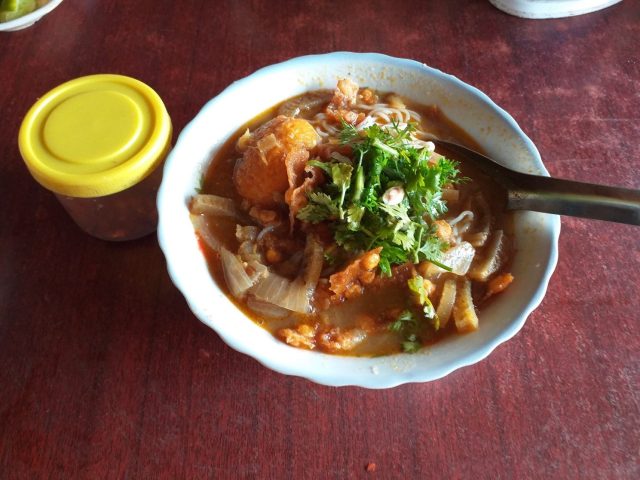
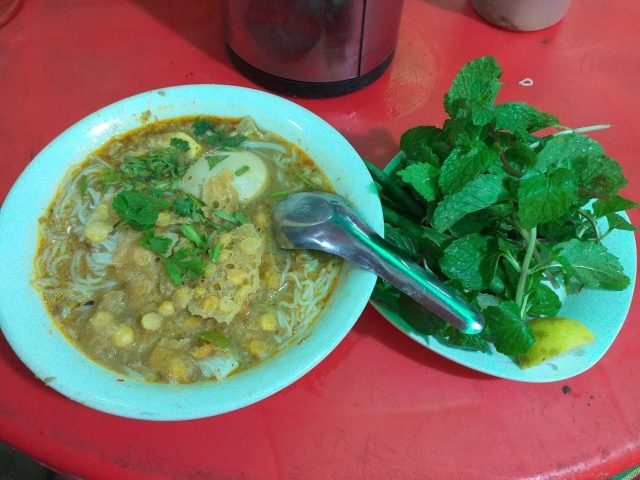
October News from the Yangon Japanese Classroom
31 October 2020
Global Japan Office Coordinator
IMAI Michiko
In October, LEVEL 4 students did not have any online classes and practiced some writing instead. Although the class is named LEVEL 4, the grammar that I teach is at an early beginner’s level, so the content of the writings can be a little limited. Nevertheless, students don’t get the chance to write much in our normal classes, so I thought this would be a good opportunity.
Of the four skills required to learn a foreign language, writing is probably the most difficult for most people. My experience of trying to write in a foreign language is never a pleasant one: I have something in mind that I want to write about, but I’m not sure where to start and I don’t know enough vocabulary or sentence structures. So I write with the help of a dictionary, but I can only seem to write half of what I originally wanted to say, and the result looks like something written by an elementary school student. The language ability of a student is always evident in how well they can express themselves through writing.
In my opinion, writing, although it can be tedious and tiring, is the best way to understand and improve one’s language ability. I say this, but I am still in the process of trying to improve my writing skills. Thankfully, this time around, I am the teacher and I don’t have to write myself.
The goal for this task was to write a diary. I gave the students the option to write about a special day in September, or about their daily lives. Three chose to write about their special day, in which they celebrated a family member’s birthday, took care of their niece, and had an exchange meeting online with students from TUFS. Usually on birthdays, families invite friends and go out to restaurants or go to a pagoda to celebrate, but this year many of us just stayed at home and cooked family dinners instead. My students all seemed to agree that the new cozy way of celebrating birthdays is a nice change. Those who wrote about their everyday lives had similar stories: helping with cooking, taking naps, watching Youtube, watching Korean dramas, and studying online. Some of the more unusual things were yoga, learning Thai, playing with pets and taking care of a diabetic grandmother. Additionally, most students commented that it was fun to stay at home at first, but when three months of quarantine had passed they were sick of not being able to go outside and that they wanted the pandemic to end so they could go back to school.
I am sure the writing task was hard work for the students, but it was very interesting for me to get a glimpse of their daily lives and understand their thoughts. Some students didn’t reply to my comments or questions when I rewrote them, while others replied politely with a lot of updated content, so it was a very fun task for me as the teacher. What should I ask them to write about in November?
September News from the Yangon Japanese Classroom
30 September 2020
Global Japan Office Coordinator
IMAI Michiko
Every September, first-year TUFS Myanmar language course students participating in a short-term study abroad program at the University of Yangon and students of the GJO Japanese language course conduct a group research project and make presentations. The GJO students were looking forward to this annual event, but this year, unfortunately, COVID-19 has made it impossible for the TUFS students to come to Yangon.
Fortunately, the teachers at TUFS planned an online exchange meeting for the students. This event was held from 13:00 o’clock to 14:30 Japan time on the 14th and 16th of September. The organizers even made a presentation for the Myanmar language exchange meeting, so I posted it on GJO’s Facebook page and talked about it during class to gather participants.
The first session held on the 14th was titled “Life with COVID-19”, in which seven TUFS students and 42 Yangon students participated. One Japanese student and six Burmese students were placed in each group, with at least one student having previously studied in Japan, which turned out to be a little unbalanced. On the 16th, six TUFS students participated, while the number of participants from Myanmar decreased to 24. Each group consisted of five students: one Japanese student and four Burmese students. When I checked in on the students in the breakout rooms, I got the impression that the participants were much more relaxed compared to the 14th.
The students studying at GJO are still at an upper-beginner’s level, even those who are in the most advanced class, so it is difficult for them to carry out a full discussion in Japanese. Even so, the participants were all motivated to interact with Japanese people and make friends. I hope that the frustration of not being able to, or not knowing how to express fully what they wanted will not get in the way of their motivation to keep learning Japanese.
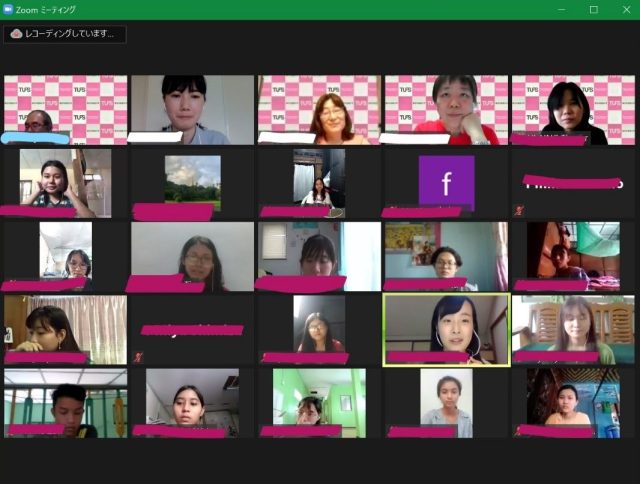
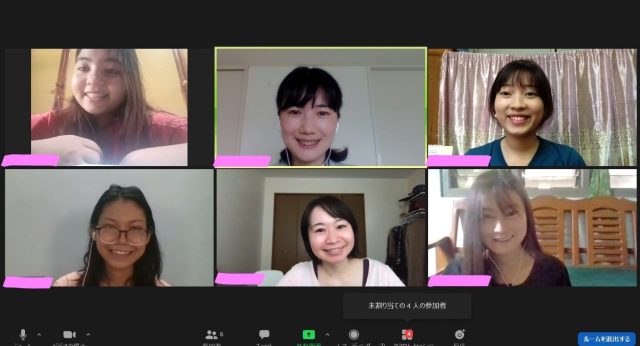
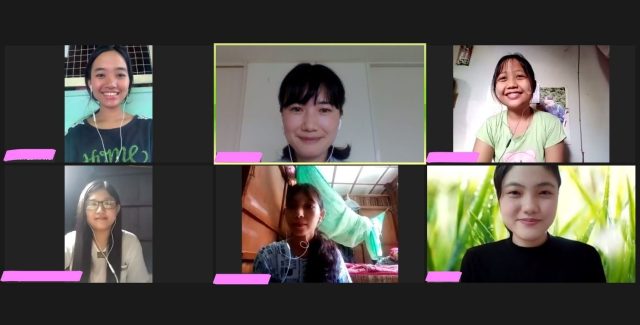
August News from the Yangon Japanese Classroom
31 August 2020
Global Japan Office Coordinator
IMAI Michiko
In my LEVEL 2 class this month, we studied the “I eat ×× with ~” sentence structure. For example, “I eat rice with chopsticks” or “I eat sandwiches with my hands”. Here the word “de”, meaning “with” represents a tool or means. While practicing with the students, I asked them something I had been wondering with the other Japanese residents. Everyone eats Si chet khao swe (Garlic Oil Noodles) with chopsticks, but Mohinga with a spoon. Why is that so? Si chet khao swe is an oily Chinese noodle dish without soup, and Mohinga is the noodle dish shown in the picture. Mohinga is a dish often referred to as the national food of Myanmar in introductions to Myanmar cuisine, and is a noodle dish made from rice with soup made from fish such as catfish. Although it is a noodle dish, it comes with a Chinese spoon like in the picture. Unlike other Myanmar dishes, it rarely comes with a spoon and fork or chopsticks. To scoop up noodles with only a Chinese spoon requires an extremely advanced technique. When I try to scoop up the noodles with only a spoon, they fall back into the bowl, splashing the soup and covering my chest and stomach with stains of Mohinga soup. I have no choice but to cut the noodles into small pieces with the spoon, but this also doesn’t work well if you are not used to it. So, why is it that people here eat the noodles without chopsticks?
The most convincing answer I had received from students was “Mohinga is a Burmese dish while Si chet khao swe is from China. That is why we eat Mohinga with a spoon and Si chet khao swe with chopsticks.” Still, I used to think it would be so much more convenient to eat it with chopsticks, even if it was originally a dish from Myanmar.
So again, I relentlessly asked the students this question during class. The next day, a student sent me his father’s answer via messenger. According to the translation that a Burmese major student who assisted me in class that night offered, his father’s answer was “Mohinga is a kind of soup because that is its main component. So, instead of eating it with chopsticks, people eat it with a spoon. Mohinga’s noodles are not wheat noodles but rice flour noodles. The reason why Mohinga is delicious is all thanks to the soup.” In that moment, I realized that it was a soup dish, rather than a noodle dish, and people used spoons to be able to taste the soup better! This made complete sense. For 4 years, when I asked many people in Myanmar, the only answer I got was “I don’t know” or “That’s just the way it is.” Everything makes so much more sense now. I thank the student who asked his father about it, the student’s father who gave me this answer, and the student who wonderfully translated the answer for me.
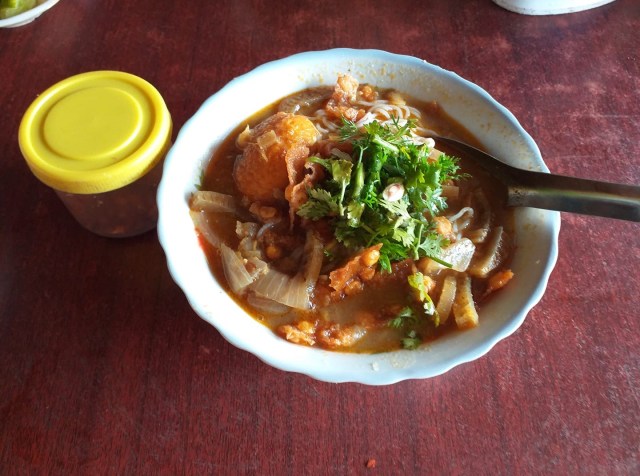
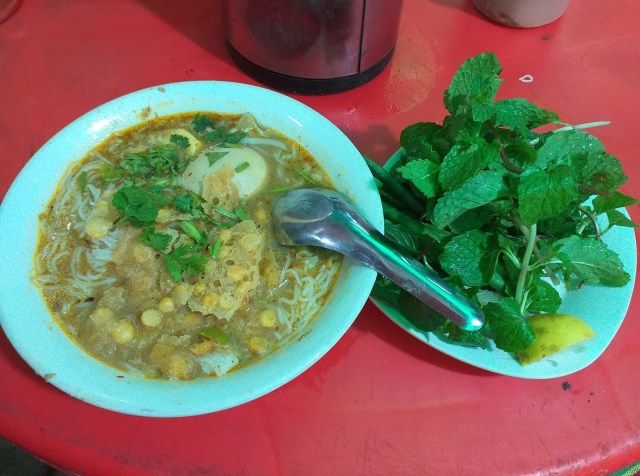
July News from the Yangon Japanese Classroom
31 July 2020
Global Japan Office Coordinator
IMAI Michiko
It is now Tanabata (Star Festival) season. I usually get bamboo branches from the campus and ask the students to write their wishes on Tanzaku (strips of paper), but this year due to classes being online, I had the students present their Tanzaku in front of everyone during online classes. LEVEL 2 students’ Tanzaku were written in English and Burmese, and a TUFS student who had previously studied at the University of Yangon joined the class as an assistant and translated them into Japanese. Some students in LEVEL 4 wrote them in Japanese.
After the presentations in class, I asked the students to take pictures of themselves with their Tanzaku or for a photo of them taken by a family member, and posted what was collected on GJO Yangon’s Facebook page. However, some of the writing was upside down or too small to decipher from the pictures, and some students didn’t send me anything. Although it was difficult to gather everyone’s wishes, I will share with you what I have.
Four to five students in LEVEL 2 wished that the pandemic would settle and things would go back to normal. How admirable. There were also three students that said, “I hope I can go to Japan”, and three more that said, “I hope I can improve my Japanese.” Two students wished for eternal happiness and two more for their dreams of receiving a scholarship to study in Japan would come true. Other than that, there were more wishes such as the following: “I want a good job”, “May my dreams come true”, “I want to go on an adventure” (this student sure seems happy and healthy), “I want to study in Japan”, “I hope I can participate in the exchange program”, “I hope everything goes well and I will be happy”, “I want my parents to be proud of me as their daughter”, “After COVID, I want to go to a TWICE concert at Tokyo Dome” (very detailed, but what is TWICE?), “I want to travel to beautiful places in the world”, “I hope I become rich”, and “I hope I can go to Okinawa.” Many Yangon students wish to become rich, but this year there was only one student who wrote this.
There were some students in LEVEL 4 who tried hard to write their Tanzaku in difficult Japanese using translation tools. First of all, the most popular answer was “I hope I can improve my Japanese”, written by four students. There were two who wrote “May my dreams come true”, but each of them made small mistakes. If it were an exam, they would have had points taken off, but I was able to understand what they were trying to say, so there was no problem communication wise. Many LEVEL 4 students wrote as many as three wishes, some of which being “I want to become a graphic designer”, “I hope I receive a lot of money and a new smartphone”, “I hope to be healthy, wealthy and knowledgeable” (yes, nothing beats this) and “I want to make the most of my life.” I don’t know if they used translation tools or had help from a Japanese friend, but I would like to commend them for thinking seriously about their hopes and dreams and writing them in Kanji that require many strokes without making mistakes. The most common were “I hope I can travel to Japan”, “I wish that I will always be happy”, and “I hope I win the lottery.” (I’ve been hoping for this too for over 40 years.) Some of the more unusual wishes were “I hope it won’t be hot next summer”, ” I want to be good at drawing”, and “I want to go to Japan by the age of 20.” Some students wrote more detailed wishes such as “I hope I can study as a master’s student at Kyoto University.”
My wish was to be able to improve on my Burmese, as always. However my true wishes are to win the lottery, to age slower, and to stop falling down. I was not able to present such wishes in front of young hopeful students, so I just stuck with my wish to be better at Burmese. I hope the stars will fulfill everyone’s wishes.
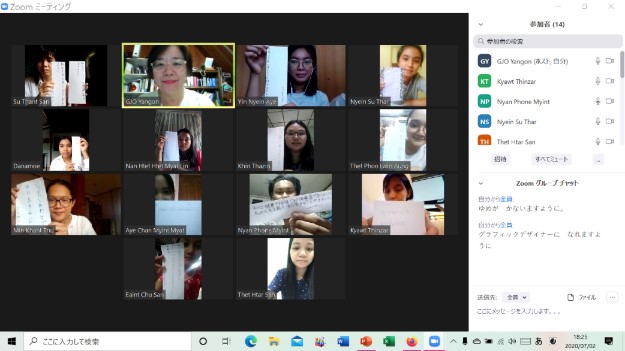
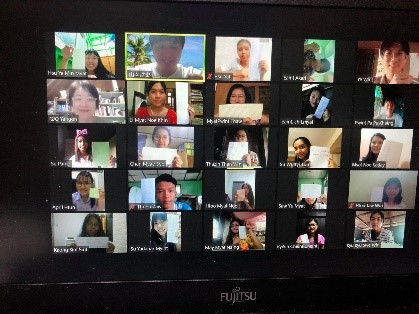
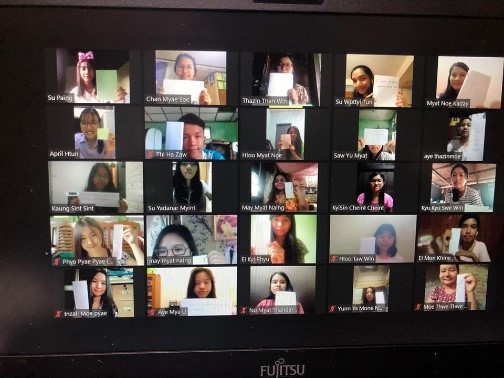
June News from the Yangon Japanese Classroom
30 June 2020
Global Japan Office Coordinator
IMAI Michiko
In past years, the second term would have started this month, but because of COVID-19, the University of Yangon has still not reopened and I have not yet been able to reenter Myanmar. I don’t know how long I would have to wait for on-campus classes to recommence, so I have decided to conduct them online for the time being. At the end of May, I posted on Facebook that I would have online classes and gathered participants. 49 out of 56 LEVEL 2 students and 16 out of 23 LEVEL 4 students wanted to take the course. I thought it would be quite a success, but when classes started, there were several students who couldn’t participated because of poor internet connection. So, currently there are 38 students in LEVEL 2 and 12 in LEVEL 4. There are a lot of students who disappear then reappear during class because they don’t have good enough internet connection, and when I put students in pairs for conversation practice, there is always someone that loses their partner. Also, because the computer picks up a lot of surrounding sounds, the student’s family’s voices become louder than mine, and I feel like we are practicing Burmese daily conversation rather than Japanese. At times, I can see a family member looking into the student’s smartphone, or hear dogs barking or the sound of peddlers in the background. The students and I often have wryly smiles on our faces.
Classes began at 3:30 PM Myanmar time, two days a week, as they usually are on campus. In the classroom, the class lasts for 2 hours, but for online classes, 1 hour and a half is all my body can take. Maybe it’s because of my poor internet environment or because I’m not used to using computers, but my screen suddenly stops working at times and I get really anxious. On top of that, I have to stare at the same screen, straining my eyes with a bad headache too, so after 1 hour and a half I am exhausted. I see some students yawning a lot 1 hour into class, so I think 1 hour and a half is appropriate.
Online classes have commenced, but who knows what is going to happen. I think it’s an incredible privilege to be able to teach here even though we live separately in Japan and Myanmar, thanks to the development of modern technology. It was unthinkable a decade ago.
It’s convenient and helpful, but it’s much more fun to share the same classroom, breathe the same air, move around the classroom stage looking at the faces of all the students, and sometimes even raising my voice. As actors and performers often say, performers and audiences make the stage together. I think classes are also a collaboration of both teachers and students. Unfortunately, it’s hard to share that real excitement on the internet. I hope that the day will come when I can get back to the classroom stage again. I miss sometimes scolding the students and laughing at their unexpected answers.
May News from the Yangon Japanese Classroom
31 May 2020
Global Japan Office Coordinator
IMAI Michiko
Since last fall, four students from the GJO Yangon Japanese Language Course have been studying at Tokyo University of Foreign Studies. Last year, thankfully, I was able to meet them in person and conduct an interview.
However, this year due to the COVID-19 outbreak, we were unable to see each other, so I sent them a questionnaire and had them answer it.
I asked each student nine questions this year, to which they all answered generously. They explained their reasonings in detail, which also showed their growth.
I wanted to let you know all of their answers to my questions, but because that would be too long, I have excerpted and summarized some of them for you.
(1) What did you enjoy most about studying abroad?
H: Being able to study the subjects I wanted to pursue at university. I also learned about Japanese culture. One of my best memories is when I went to the sea in Kamakura and when I went to see Kabuki.
MT: Getting to know new Japanese and foreign friends. Getting experience by going to many different places in Japan.
K: It snowed. I also had an unexpected experience at the aquarium.
MN: The Southeast Asia program with Myanmar, Laos and Cambodia during spring vacation.
(2) What do you dislike about Japan and about Japanese people?
H: People don’t show their true feelings.
MT: How they ride bicycles. Because only one person can ride at once./ Also people tend to prevaricate a lot.
K: The fact that you can’t go to the hospital right away unless you make an appointment. Also the elderly have very short temper.
MN: People don’t apologize when they bump into someone.
(3) What Japanese food do you like?
H: Udon, Tempura, Fried rice
MT: Takoyaki, Okonomiyaki, Tempura
K: Takoyaki without ginger, Okonomiyaki, Cold Soba and Tempura set
MN: Ramen, Mochi, Peach jelly
(4) What Japanese food do you dislike?
H: Tarako, Mentaiko, Konjac
MT: Wasabi, Onigiri with Pickled Plum, Onigiri with Mentaiko
K: Miso Soup, the smell of fried noodles, Sushi
MN: Wasabi, Sausages
(5) What would you have been doing during spring break if it hadn’t been forCOVID-19? What did you want to do?
H: I was supposed to go to Kyoto.
MT: I would have liked to travel to different places, go out with my homestay family, or go out with Japanese friends.
K: I wanted to go to Osaka and try some well-known dishes and travel. I also wanted to go to Nara Park, Kyoto and Okinawa.
MN: I would have been working part-time. I wanted to take pictures while eating around Asakusa wearing Myanmar clothes.
(6) What would you like to do before you go back to Yangon in July?
H: I want to go to Kyoto and Osaka. I want to climb Mt. Fuji. And I also want to buy a good watch for my father.
MT: I want to go to Universal Studios Japan, Disneyland and Mt. Fuji. I also want to visit the Tokyo Skytree and Asakusa.
K: I want to go to Nara Park and take pictures with the deer. I also want to go to Osaka and Kyoto. I definitely want to go to Universal Studios Japan and Disneyland. I want to eat all types of Japanese food, too. I also want to go to Cat Island.
MN: I want to go to karaoke.
I have 3 more questions, but I will skip them this time.
These answers were very interesting to me. In the answer to (2) about the negative aspects of Japan and Japanese people, it was interesting to hear that they don’t like the way people ride bicycles because two people are not allowed to ride on the same bike at once. Actually, there are many people who ride with two people, but as a rule, you should ride by yourself for safety, so they must have been instructed to ride alone. If I remember correctly, there were also opinions last year about Japanese people not apologizing when bumping into others. It is true that there are Japanese people with bad manners. There are many people in Myanmar who don’t apologize either though. Does this mean that foreigners don’t get apologies anywhere in the world? “People don’t speak their minds. They are evasive.” is also something that foreigners feel uncomfortable with in Japan.However I have lived in Indonesia, Thailand, and Myanmar, and in Southeast Asia for 25 years, and I feel that the people from these three countries and the people from other countries in Southeast Asia are, like the Japanese, not very forthright and don’t say what they really mean. They may not stifle their feelings as much as the Japanese do, but for example they smile, instead of saying “no”, to express that they don’t want or like something. So I, being the simple minded person that I am, don’t understand the subtleties of emotions and sometimes misunderstand them completely.
Personally, I was a little shocked by the Japanese food mentioned in (4). Wasabi was mentioned last year so I wasn’t surprised, but I wouldn’t have thought that they didn’t like onigiri with tarako, mentaiko, or umeboshi. Actually, “Onigiri” appears in the textbook we use, so I showed pictures of delicious looking onigiri with umeboshi and mentaiko to the students as a cultural introduction. Every year I make a heated speech to explain how delicious they are. For me, onigiri with umeboshi and onigiri with mentaiko are extremely delicious. They whet my appetite and give me nostalgia just by looking at pictures. But don’t they appeal to the tastes of the people of Myanmar? Taste is unique to each race, so I wonder if there is a universally delicious dish that everyone in the world would like. (138) Or maybe the students expected too much because I overly emphasized how tasty onigiris are. Perhaps it was my fault... from now on, I will tone down my presentations ononigiri.
As the students mentioned, Kyoto, Osaka, Nara, Mt. Fuji, Universal Studios Japan, and Disneyland are all meccas for travelers in Japan. I really hope that the students will be able to move around more freely, go wherever they want to go, and return home with satisfaction. I am worried that they will be disappointed if they expect too much though.
April News from the Yangon Japanese Classroom
30 April 2020
Global Japan Office Coordinator
IMAI Michiko
The finals of the GJO Yangon Japanese Language Course are held at the beginning of March every year so as to not overlap with examinations for regular subjects at the University of Yangon. They were held on the 6th and 7th this year as well, and were marked promptly, but we always announce the results at the end of March or the beginning of April so students don’t get discouraged while preparing for the final exams of their regular subjects.
This year, 23 people took the LEVEL 3 test and all of them passed, so I didn’t announce it. Of the 93 people who took the LEVEL 1 test, 56 passed the test and scored more than 70%. On April 7, we published a list of successful candidates, or LEVEL2 advancement candidates, on Facebook, and we immediately received a response from four students on the same day and one on the 13th, who complained that their names were not on the list. The five of them said that each time they attended, handed in their homework, and after the exam, they were able to answer the questions with their friends, and they were doing well. Please tell me the score. Or he wanted me to show him his answer sheet. As I was returning to Japan, I didn’t have the answer sheets with me, so I couldn’t review them and had no choice but to tell them, “I looked at your answers three times and calculated the scores several times, so I don’t think I made any mistakes. However, if you are confident that you have definitely passed the examination, please contact me when foreigners are able to return to Myanmar and GJO Yangon restarts. Then I will check your answer sheets again”. 3 out of 5 people said they were confident and will definitely contact me.
Every time I hold the final exam of the LEVEL 1 class, I feel conflicted. Even though they came all the way here to study Japanese, I feel that failing them because their grades are bad will lead to a decrease in the number of pro-Japanese people. But on the other hand, if there are 60 students in the elementary language class who practice a lot in the classroom, the quality of the class will deteriorate. Also, there are some students who, despite surviving the class up until now, are unable to attend due to unavoidable circumstances, such as a presentation or lab for their major subject. I think there are students who lose interest in Japanese along the way, get tired of studying, or become lazy. I want to get students who don’t stop until the end even if their grades are good or not. I wish I could find out which students can go on to the end.
The breakdown of the successful candidates for LEVEL 1 this time was 37 in liberal arts and 19 in science. By major, there were 13 students in the Department of Japanese Literature, 10 students in the Department of International Relations, and 9 students in Computer Science. There are no physics departments this time, and there are two new history departments left. Now, what happens when classes resume in the new semester?
